Introduction of SFP Certification standard
In 2022, many manufacturers engaged in the production and sales of optical modules, and users will have many ways to choose from when purchasing optical modules of the same model. However, some of these manufacturers have not obtained certificates related to optical modules, and their production processes do not meet the manufacturing standards either. The optical module certificate standard represents the quality standard and is also a vital indicator for judging the strength of a manufacturer. This article will introduce you to the standards for optical modules and what they represent.
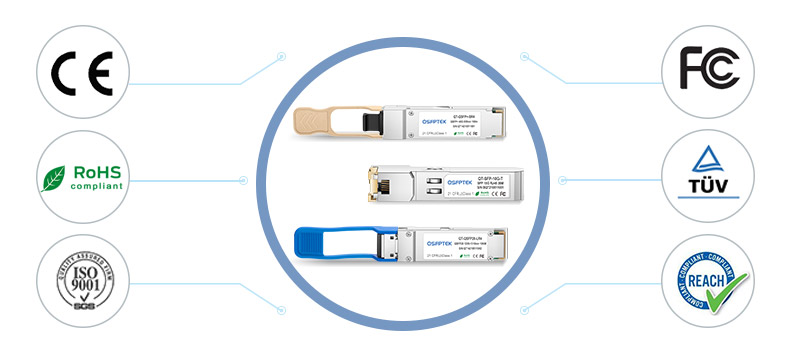
What is the certification of the transceiver?
The certificate of the optical module involves the product safety certificate and the production link certificate. Security certificates tend to vary according to individual country regulations. The United States generally follows the FCC certificate, the European Union follows CE certification, RoHs certification, etc. Common optical module certifications include CE, ROHS, FCC, TUV, ISO 9001, etc. The following will introduce the meaning of each standard.
Certification types of transceivers you should know
ISO 9001 certification

ISO 9001 certification is the basic certification required for optical module production workshops, involving the R&D industry manufacturing of optical fiber communication modules. It specifies the standards for quality management systems, and the latest version is ISO 9001:2015 released in 2015. The certification standards cover the company's incoming materials, manufacturing process, research and development, logistics and other aspects.
TUV certification
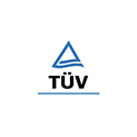
This certificate mainly involves the safety standards of production, has high requirements on the production environment, and will conduct on-site monitoring. It is relatively difficult to obtain this certificate. If an optical module manufacturer has a TUV certificate, its manufacturing scale is generally considerable.
RoHS certification
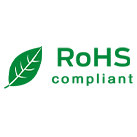
RoHS certificate is a standard established by EU legislation, the main purpose is to limit harmful ingredients in electrical and electronic products. The test items of this standard include lead, mercury, cadmium, hexavalent chromium, polybrominated biphenyls and polybrominated diphenyl ethers in electronic products, and the key point is that the content of cadmium cannot exceed 0.01%.
The following are the upper limit concentrations specified in RoHS for the six hazardous substances:
Cadmium: less than 100ppm
Lead: less than 1000ppm
Less than 3500ppm in steel alloy
Less than 4000ppm in aluminum alloy
Less than 40000ppm in copper alloy
Mercury: less than 1000ppm
Hexavalent chromium: less than 1000ppm
FCC certification

The FCC certificate is a voluntary certificate developed by the Federal Communications Commission Association for the sale and manufacture of electronic products in the United States. This certificate indicates that the electromagnetic radiation of the device is below the FCC regulations. The use of optical modules is often used in clusters, and there will be a large number of optical modules running simultaneously in the data center, so the FCC certificate ensures the safety of the staff. Optical modules without FCC certificates are unimaginable. For transceiver modules to be sold in the United States, FCC certification is essential.
CE marking
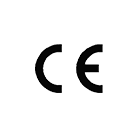
If the manufacturer has CE certification, it means that the optic module product complies with European health, safety, and environmental standards. Optical modules must comply with safety directives such as the Low Voltage Directive and the EMC Directive. The Low Voltage Directive is to limit the working voltage of the equipment to ensure its safety of the equipment. EMC or Electromagnetic Compatibility means that the device will not interfere with or be affected by any other electrical equipment.
Reach marking
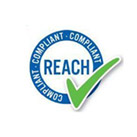
REACH stands for Registration, Evaluation, Authorization and Restriction of Chemicals. It came into effect on June 1, 2007. It is a regulation in the European Union to control chemical substances. In the field of optical modules, it is used to prevent the use of chemical substances prohibited in REACH annexes, ensuring high safety and low environmental pollution.
What certifications does QSFPTEK get?
In order to prove our quality, our company has been insisting on various certifications over the years. The certifications obtained by the QSPFTEK factory include ISO9001:2015, TUV certification, and the certifications obtained by SFP/QSFP series products include CE certification, FCC certification, RoHS certification, and Reach certification. We can provide originals of all certified certificates.
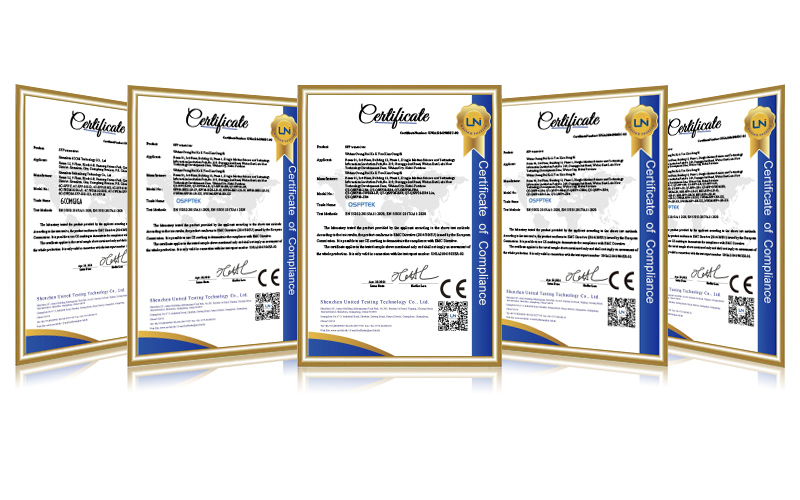
QSFPTEK has been engaged in optical module production for 11 years and has been engaged in production and sales in accordance with the standards of the United States, the European Union and other regions. QSPFTEK makes these certifications to ensure the safety and quality of products. The price of our products is the lowest, but we have never lowered the quality of manufacturing standards, which is our original intention of making products. The brand concept of QSFPTEK is to provide high-quality and low-cost optical module products and solutions for SMB users.










